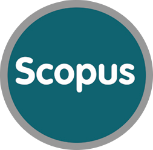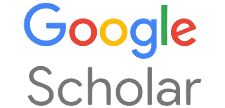Integrating Quantum Model Computing With Machine Learning: Quantum Algorithms For Accelerating Ai Model Training
Keywords:
Quantum Computing, Machine Learning, AI Model Training, Quantum Algorithms, Quantum Machine LearningAbstract
Quantum computing is a rapidly growing discipline that uses properties of quantum mechanics to compute problems that are challenging for traditional computational means. On the other hand, machine learning is a subset of artificial intelligence that enhances a computer's ability to learn patterns from experience. Massive data will get bigger with time; machine learning may sometimes be up to the task of big data, while quantum computing can perform fast computing. The crossbreed of quantum computing and machine learning brought about another field: quantum ML, or quantum machine learning. Applying the quantum learning algorithm includes benefiting from the fast processing in quantum computing and demonstrative speedup over the classical algorithm. Another subfield of artificial intelligence includes natural language processing, through which the computer can understand human languages. The chasers seek to apply quantum machine speedup in natural language processing. In this paper, firstly, we explain how from quantum computing to quantum machine learning. We then discuss the current trends regarding quantum machine learning for natural language processing. We also offer classic and quantum-based long short-term memory for POS tagging of code-mixed language and social media code mixed language. According to the above experiment, it is clear that the quantum-based long short-term memory works better than the classical long short-term memory for POS tagging for code-mixed datasets. Quantum computing is a rapidly developing field that uses the properties of quantum mechanics to solve problems challenging for classical computations.
References
. Beyaz, M. (2022, November 5). What is quantum computation? https://www.linkedin.com/pulse/what-quantum-computation-mehmet-beyaz/
. C-DAC - Quantum Computing. (n.d.). C-DAC. https://www.cdac.in/index.aspx?id=quantum_computing
. GeeksforGeeks. (2019, May 24). The ultimate guide to quantum machine learning: The next big thing. https://www.geeksforgeeks.org/the-ultimate-guide-to-quantum-machine-learning-the-next-big-thing/
. GeeksforGeeks. (2023, May 15). Introduction to Grover’s algorithm. https://www.geeksforgeeks.org/introduction-to-grovers-algorithm/
. Gill, J. K. (2023, February 7). Quantum machine learning. XenonStack. https://www.xenonstack.com/glossary/quantum-machine-learning
. Paul, S., & Mitra, A. (2022). A review of applications of quantum computing in machine learning. In *Advances in Systems Analysis, Software Engineering, and High-performance Computing book series* (pp. 57–80). https://doi.org/10.4018/978-1-7998-9183-3.ch005
. OSF. (n.d.). https://osf.io/preprints/osf/rf4xp
. Quantum speedup: Definition & applications | StudySmarter. (n.d.). StudySmarter UK. https://www.studysmarter.co.uk/explanations/engineering/artificial-intelligence-engineering/quantum-speedup/
. Schuld, M., Sinayskiy, I., & Petruccione, F. (2014). An introduction to quantum machine learning. Contemporary Physics. https://doi.org/10.1080/00107514.2014.964942
. What is Shor’s algorithm? (n.d.). https://www.quera.com/glossary/shors-algorithm#:~:text=Shor's%20Algorithm%2C%20named%20after%20mathematician,known%20classical%20algorithms%20for%20factoring.
Madasani, R. C., & Reddy, K. M. (2014). Investigation Analysis on the performance improvement of a vapor compression refrigeration system. Applied Mechanics and Materials, 592, 1638-1641.
Oyeniyi, J. Combating Fingerprint Spoofing Attacks through Photographic Sources.
Bhadani, U. (2020). Hybrid Cloud: The New Generation of Indian Education Society.
Bhadani, U. A Detailed Survey of Radio Frequency Identification (RFID) Technology: Current Trends and Future Directions.
Bhadani, U. (2022). Comprehensive Survey of Threats, Cyberattacks, and Enhanced Countermeasures in RFID Technology. International Journal of Innovative Research in Science, Engineering and Technology, 11(2).
Downloads
Published
How to Cite
Issue
Section
License
Copyright (c) 2024 Well Testing Journal

This work is licensed under a Creative Commons Attribution-NonCommercial 4.0 International License.
This license requires that re-users give credit to the creator. It allows re-users to distribute, remix, adapt, and build upon the material in any medium or format, for noncommercial purposes only.

